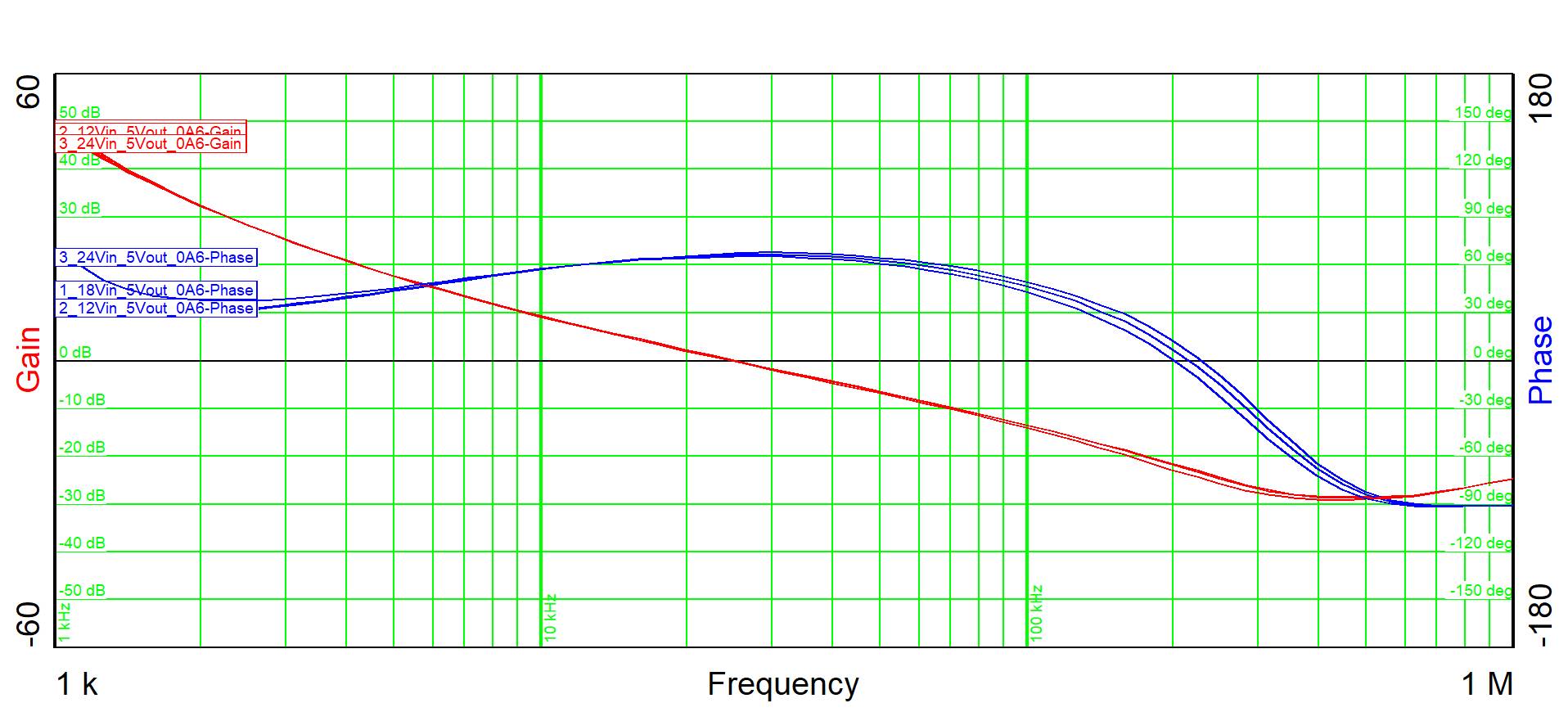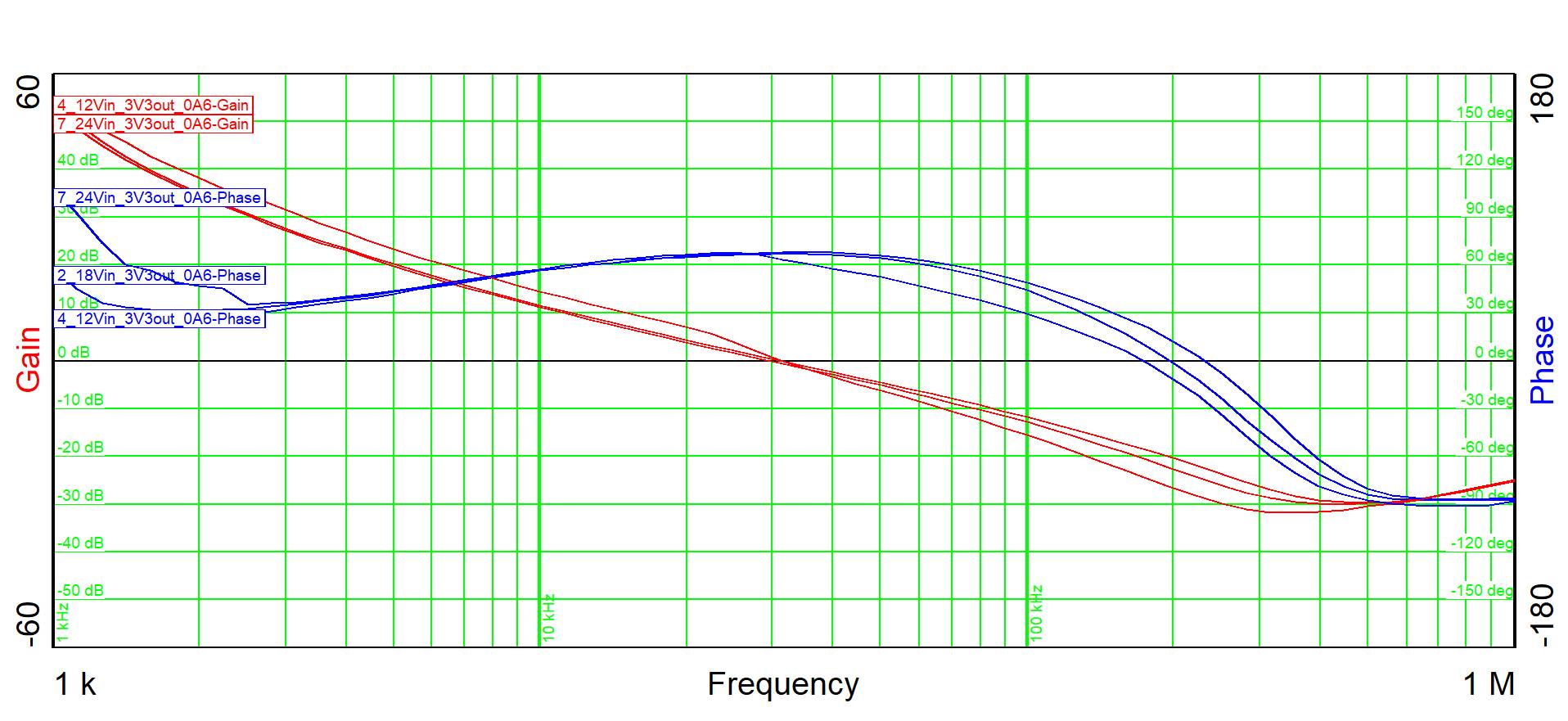TIDT359 October 2023
2.4 Bode Plots
Bode plots are shown in the following figures.

12 VIN, 0.6-A load
current: fco 25.2 kHz, 66 deg phase margin, –23 dB gain margin
18 VIN, 0.6-A load current: fco 24.7 kHz, 67 deg phase margin, –23 dB gain margin
24 VIN, 0.6-A load current: fco 24.4 kHz, 65 deg phase margin, –23 dB gain margin
Figure 2-4 Bode Plot VOUT1 = 5
V18 VIN, 0.6-A load current: fco 24.7 kHz, 67 deg phase margin, –23 dB gain margin
24 VIN, 0.6-A load current: fco 24.4 kHz, 65 deg phase margin, –23 dB gain margin

12 VIN, 0.6-A load
current: fco 31.0 kHz, 68 deg phase margin, –23 dB gain margin
18 VIN, 0.6-A load current: fco 29.3 kHz, 66 deg phase margin, –22 dB gain margin
24 VIN, 0.6-A load current: fco 31.1 kHz, 63 deg phase margin, –24 dB gain margin
Figure 2-5 Bode Plot VOUT2 =
3.3 V18 VIN, 0.6-A load current: fco 29.3 kHz, 66 deg phase margin, –22 dB gain margin
24 VIN, 0.6-A load current: fco 31.1 kHz, 63 deg phase margin, –24 dB gain margin